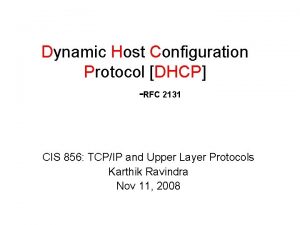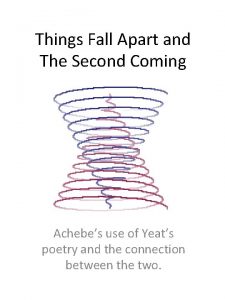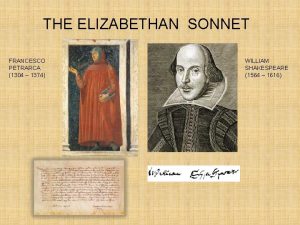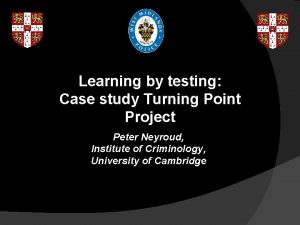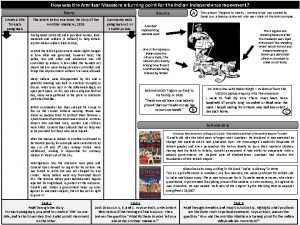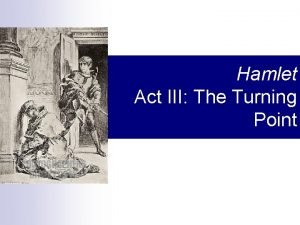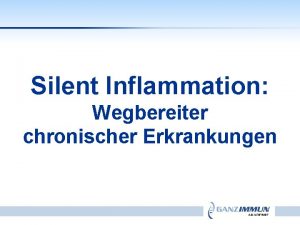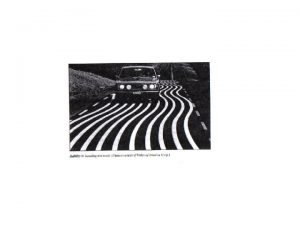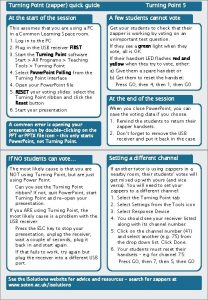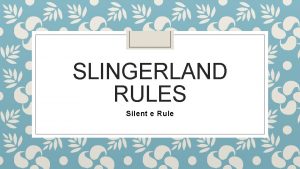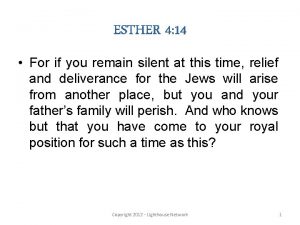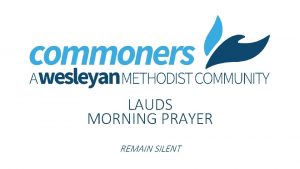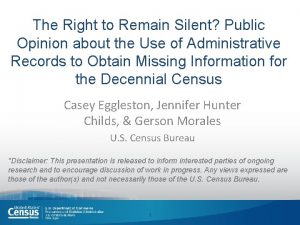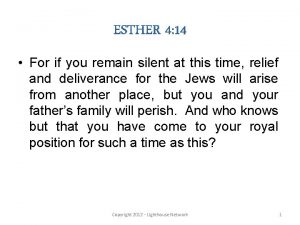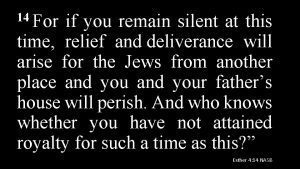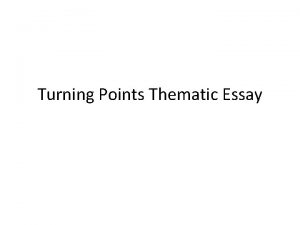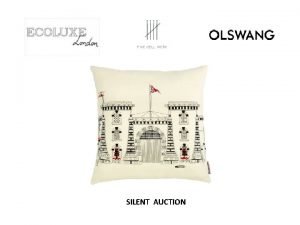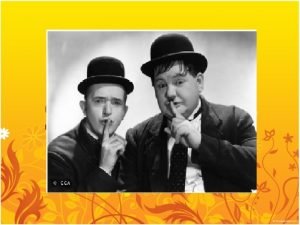Chapter 8 Turning Point Assessment Rules Remain silent























- Slides: 23

Chapter 8 Turning Point Assessment

Rules • • Remain silent during test Use clickers to answer question Keep both hands on table Keep notes and bags under the table

Scoring • Easy: 1 may get wrong • Medium: 2 may get wrong • Hard: 3 may get wrong

1. When two members of the F 1 generation is crossed, the offspring is referred to as the ____ generation 1. 2. 3. 4. P P 1 F F 2

2. A trait that is determined by a gene found only on the X chromosome is said to be a(n) ____ trait. 1. 2. 3. 4. Autosomal Sex linked Dominant Recessive

3. Crossing two pea plants heterozygous for flower color should produce a phenotypic ratio of ____ in the offspring. 1. 2. 3. 4. 1: 3 1: 2: 1 9: 3: 3: 1 1: 2: 2: 1: 4: 2: 1

4. The genotype PP is an example of this. 1. Homozygous recessive 2. Homozygous dominant 3. Heterozygous dominant 4. Heterozygous recessive

5. The diagram used to predict the outcome of a genetic cross is called the 1. Heterozygous diagrams 2. Punnet squares 3. Probability 4. Family trees

6. When several genes influence a trait, the trait is said to be 1. Polygenic 2. Codominant 3. Incompletely dominant 4. Completely dominant

7. Which of the following genetic disorders is caused by a sex-linked allele? 1. 2. 3. 4. Sickle cell anemia Hemophelia A Hypercholestolemia Tay-Sachs Disease

8. Which of the following is NOT one of Mendel’s major hypotheses? 1. An individual receives two copies of a gene for each trait 2. Genes have alternative versions, which we now call alleles 3. Gametes carry several alleles for each inherited trait 4. When two alleles appear together, one may be dominant

9. A gene with two dominant alleles that are expressed at the same time is (this is not referring to genes that are shared) 1. Codominant 2. Mutational 3. Incompletely dominant 4. Polygenic

10. The law of segregation states that pairs of alleles 1. Separate when gametes form 2. Separate when somatic cells form 3. Are always the same 4. Are always different

11. An individual’s ______ is often depends of the condition in the environment 1. 2. 3. 4. Genotype Phenotype Karyotype Prototype

12. This diagram is used to see the probability of two traits in one generation 1. 2. 3. 4. Monohybrid cross Dihybrid cross Triploid cross Family Tree

13. The branch of biology that studies heredity is ____ 1. 2. 3. 4. Genetics Chemistry Biology Test cross

14. These are the first two individuals that are crossed in a breeding experiment 1. 2. 3. 4. P generation F 1 generation F 2 generation Generation X

15. For each inherited character, an individual has this many copies of the gene. 1. 2. 3. 4. 1 2 3 4

16. Alternative versions of genes are called _____ 1. 2. 3. 4. Traits Characteristics Dominant Alleles

17. In a test cross, an individual with an unknown genotype but whose phenotype is dominant is crossed with this kind of individual. 1. Heterozygous Dominant 2. Homozygous Dominant 3. Heterozygous recessive 4. Homozygous recessive

18. This is the likelihood that a specific event will occur 1. 2. 3. 4. Statistics Probability Ratio Coin Toss

19. This genetic disorder is a dominant disorder 1. 2. 3. 4. Sickle cell anemia Cystic fibrosis Hemophelia Huntingdon’s disease

20. This process allows scientists to replace the defective genes with copies of healthy ones 1. 2. 3. 4. Gene Therapy Dihybrid cross Genetics Pedigrees
 Dhcp working diagram
Dhcp working diagram The way my mother speaks
The way my mother speaks Turning and turning in the widening gyre
Turning and turning in the widening gyre Reel shadows of the indignant desert birds.
Reel shadows of the indignant desert birds. Turning and turning in the widening gyre
Turning and turning in the widening gyre Silent e rule
Silent e rule Sustained silent reading rules
Sustained silent reading rules Silent letters rules
Silent letters rules +audience +response +clicker
+audience +response +clicker Turning point suffragist memorial
Turning point suffragist memorial Why was the spanish american war a turning point
Why was the spanish american war a turning point Gettysburg battle
Gettysburg battle The shakespearean sonnet
The shakespearean sonnet Operation turning point
Operation turning point Why was the amritsar massacre a turning point
Why was the amritsar massacre a turning point Turning point in hamlet
Turning point in hamlet List the four phases of the business cycle.
List the four phases of the business cycle. How to get the axis of symmetry of a parabola
How to get the axis of symmetry of a parabola The turning point of the civil war
The turning point of the civil war The turning point of the civil war
The turning point of the civil war Liberation of majdanek turning point
Liberation of majdanek turning point Turning point
Turning point Falling action of oedipus rex
Falling action of oedipus rex Turning point of the revolutionary war
Turning point of the revolutionary war
